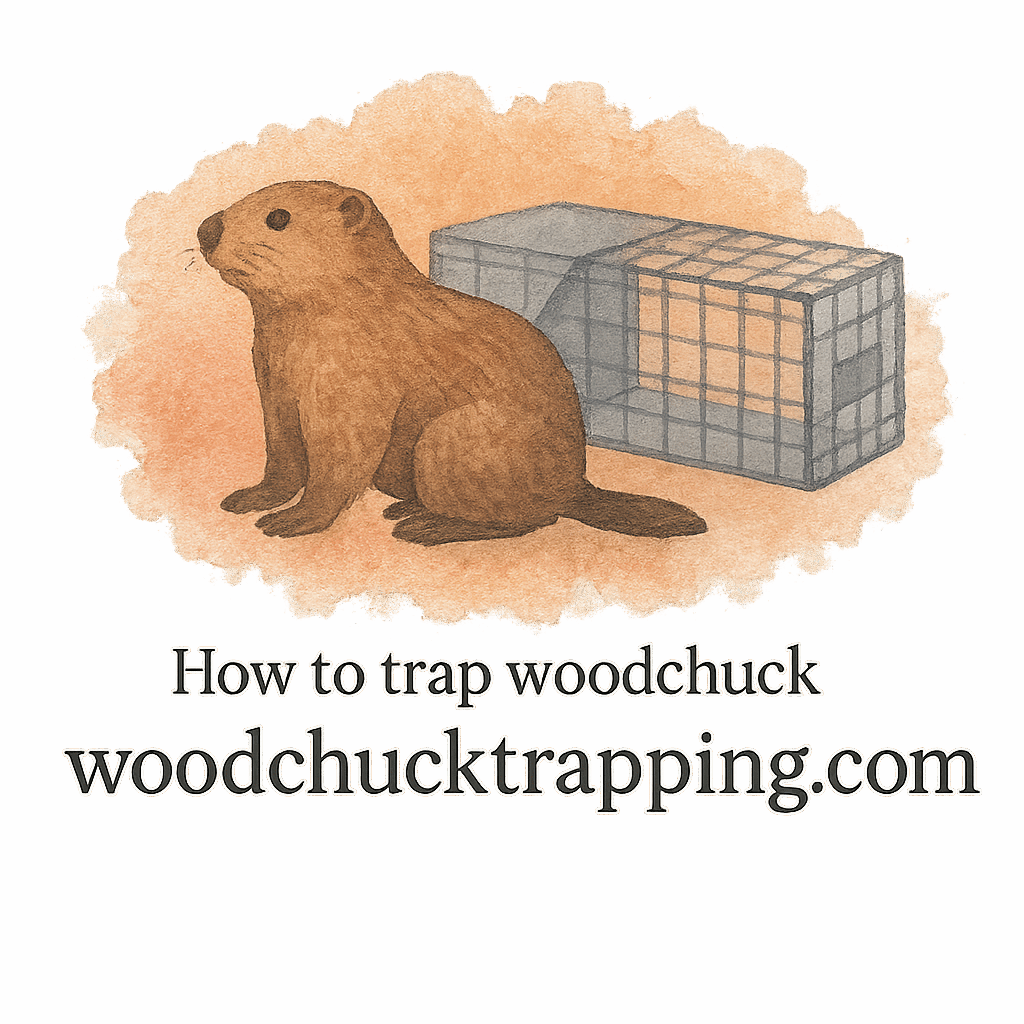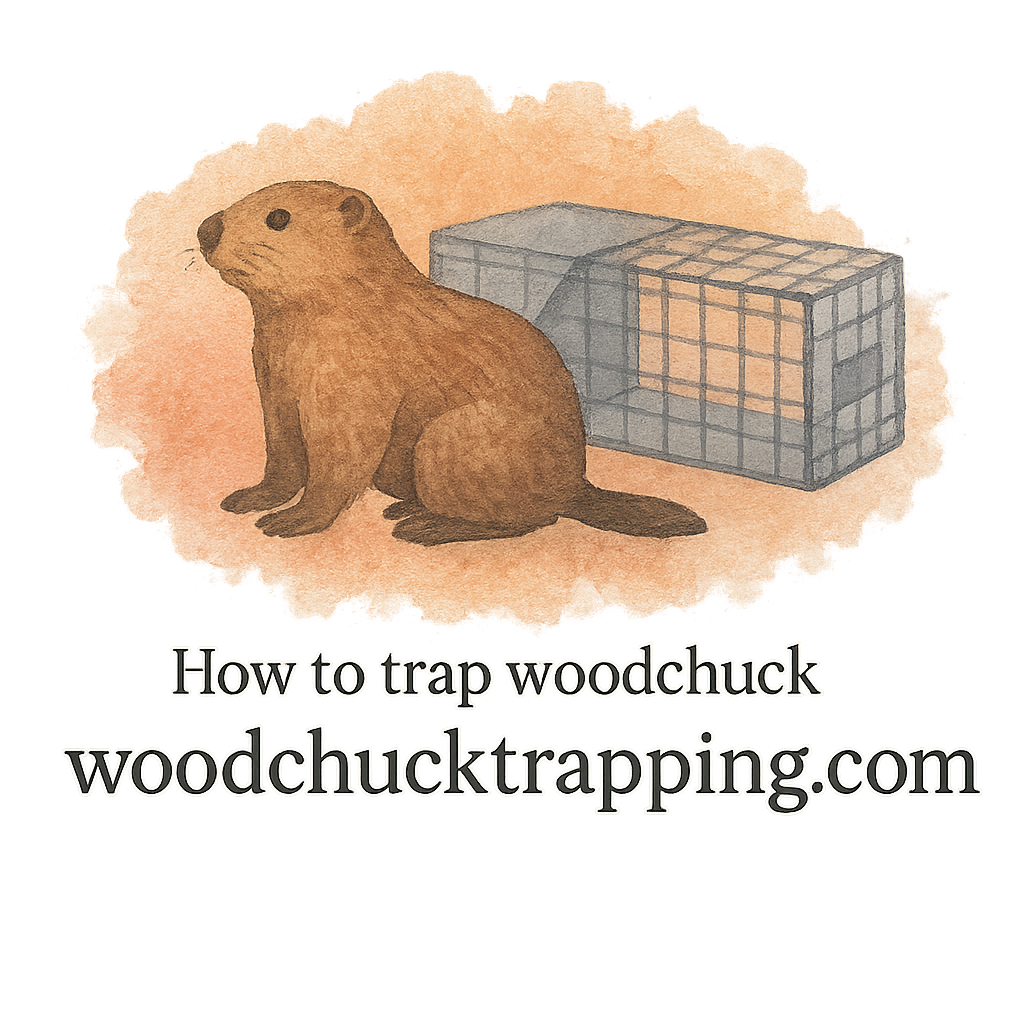Introduction
Woodchucks, also called groundhogs, might look cute munching on clover, but anyone with a garden or a yard knows the damage they can cause. From digging tunnels under sheds to wiping out vegetable beds overnight, these critters are more than just backyard guests—they’re determined squatters. That’s where humane woodchuck trapping techniques come into play.
But here’s the problem: the internet and word-of-mouth advice are full of myths about trapping woodchucks humanely. Some make it sound impossible, others paint it as too costly or ineffective. Today, we’re busting eight of the biggest myths about humane woodchuck trapping so you can protect your property and stay humane in the process.
Why Woodchuck Trapping Matters
Before we dive into myths, let’s talk about why trapping woodchucks matters in the first place.
Understanding Woodchuck Behavior
Woodchucks are burrowing animals. They dig extensive tunnel systems with multiple entrances and exits, making them tough to catch. Their instincts drive them to return to food sources, and if your yard looks like a buffet, they’re staying.
The Impact of Woodchuck Infestation
A single woodchuck can cause surprising damage—chewed crops, collapsed garden beds, and even weakened building foundations. For property owners, learning humane trapping is more than pest control—it’s about protecting investments and maintaining balance in your outdoor space.
Myth #1: Humane Traps Don’t Work
Why This Myth Persists
Many people believe humane traps aren’t strong enough to handle woodchucks. The myth likely comes from folks who used the wrong trap size or set it up incorrectly.
The Truth About Humane Trapping
Humane traps work when used correctly. Choosing the right trap size and placing it along active burrow entrances makes all the difference. With proper setup, a humane trap can be just as effective as harsher methods—without the guilt.
Myth #2: Bait Doesn’t Matter in Humane Trapping
Common Misconceptions About Bait
Some homeowners think any old food will lure a woodchuck into a trap. Others assume woodchucks will wander in out of curiosity. Both are wrong.
Effective Baiting and Luring Techniques
Woodchucks are picky eaters. Fresh fruits, vegetables, and certain scent baits make humane trapping far more successful. Pairing the right lure with correct trap placement is the secret sauce.
Myth #3: Humane Trapping is Illegal
Understanding Laws and Safety
Laws vary by state, but humane trapping is not only legal—it’s often the recommended solution. Regulations exist to ensure animals aren’t harmed and people stay safe.
Staying Compliant While Being Humane
Always check local guidelines. Many areas allow humane traps as long as they’re checked regularly, and animals are relocated properly.

Myth #4: Woodchucks Can’t Be Trapped in Small Yards
Challenges in Minimal Space
In tight spaces, homeowners fear there’s no room to set up traps effectively.
How to Trap Woodchucks in a Small Yard
Compact traps are designed exactly for this reason. When placed strategically near burrows or feeding areas, they work even in modest gardens.
Myth #5: Humane Trapping Requires Expensive Equipment
Breaking Down the Cost
Sure, some gear can be pricey, but that doesn’t mean humane trapping is out of reach.
Affordable Trapping Gear and Equipment Reviews
Plenty of budget-friendly traps, gloves, and tools exist. In fact, some of the best humane traps are simple designs that get the job done without draining your wallet.
Myth #6: Humane Traps Are Unsafe for People and Pets
Safety Concerns Explained
People worry that traps could accidentally harm pets or kids.
The Role of Gloves and Safety Practices
With proper setup and safety precautions, humane traps are safe. Using gloves reduces scent transfer and keeps handling secure. Placing traps in strategic, protected locations minimizes risks.
Myth #7: Humane Trapping Isn’t Effective Long-Term
Signs of Infestation
Even after catching one woodchuck, more may move in. That’s where prevention comes in.
Combining Prevention & Damage Control
Humane trapping works best when paired with prevention: fencing, sealing burrows, and removing attractants like fallen fruit.
Myth #8: Humane Means Releasing Without Consideration
The Importance of Handling Trapped Animals
Catching a woodchuck is only step one. Handling and releasing must be done safely and ethically.
Relocation vs. Humane Techniques
Releasing too close means the woodchuck comes back. Releasing in the wrong spot harms local ecosystems. Humane means considering the animal and the environment.
How to Identify Woodchuck Problems Early
Signs of Burrows
Fresh dirt mounds, hidden holes, and tunnel networks are clear indicators.
Recognizing Yard Damage
Flattened crops, gnawed stems, and sudden plant disappearance all point to woodchuck activity.
Best Practices for Humane Trapping
Choosing the Right Compact Traps
Size matters. A properly sized trap ensures effectiveness without harm.
Trapping Techniques That Work
Place traps near active burrow entrances or feeding paths. Anchor traps securely, and check frequently.
Using the Right Trap Scent
Scent baits boost success. Combining fresh bait with effective lure scents attracts woodchucks faster.
Conclusion
Humane woodchuck trapping isn’t a gimmick—it’s a responsible, effective solution. By busting these myths, you can approach trapping with confidence. With the right gear, techniques, and mindset, you’ll protect your yard, stay compliant with the law, and do right by the animals.
FAQs
- What’s the most effective humane bait for woodchucks?
Fresh fruits and vegetables, like apples or carrots, work best. Pair with scent baits for maximum success. - How often should I check humane traps?
Ideally every few hours. At the very least, twice daily to prevent stress on the animal. - Can I reuse a humane trap for multiple woodchucks?
Yes, but always clean it thoroughly to remove lingering scents. - Do humane traps harm the animal in any way?
When properly used, humane traps don’t injure the animal—they simply contain it safely. - Is relocation always required after trapping?
In most cases, yes. But check your local laws and safety guidelines before releasing. - What if I trap a non-target animal by mistake?
Simply release it immediately and safely. This is why frequent trap checks matter. - How do I stop woodchucks from coming back after trapping?
Combine trapping with prevention and damage control: seal burrows, use fencing, and remove food sources.


